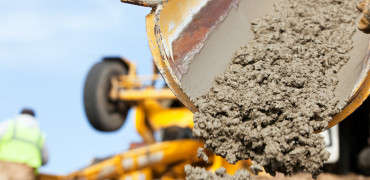In 2002 my architectural practice was only 2 years old, but because we had so many concerns about the quality of mass-built housing developments across the UK, we decided to embark on a search project looking at prefabricated construction methods, as a way of improving the way we build homes.
It was a big step for such a small, young office.
We did it because we could see huge benefits to an industry reluctant to innovate and change.
It has actually taken hundreds of years for modular / prefabricated housing to become a serious player in the home building market.
The government are jumping from one policy to the next and it’s just not good enough
A history of prefab
We often think of pre-fabricated structures as being a 20th century development, one we unfortunately associate with 1970’s portakabins in school playgrounds, but records show that as early as 1624 the English brought with them to Cape Ann, Massachusetts a panellised house of wood for use by the fishing fleet.
The house was subsequently disassembled, moved, and reassembled several times.
This appears to be one of the first earliest examples of a ‘demountable’ house, one that can be assembled, deconstructed and then reassembled.
The 19th century and industrialisation saw a boom in buildings that could be constructed and reconstructed again from churches and tabernacles to village halls.
One of the most famous prefabricated structures in the world was The Crystal Palace, erected for the Great Exhibition of 1851 in Hyde Park, and later moved to Sydenham.
But, very few homes were factory built.
The 20th century saw the most rapid development in Prefabricated housing, particularly with post-war housing.
The new ways of making seemed exciting and forward-thinking at the time, but unfortunately many of the homes didn’t stand the test of time due to poor detailing and low quality materials.
Concrete-panelled homes with leaking flat roofs soon fell out of fashion.
An economic hold up
The dawn of a new millennium has seen quite an amazing resurgence in prefabrication, now often referred to as MMC (Modern Methods of Construction).
We now detail buildings to a much better standard and we use products and construction systems that are technically far more superior than those we used say 50 years ago.
But, with the high levels of investment needed to build factories and infrastructure at scale, in a boom and bust industry reluctant to embrace change, progress has been very slow.
Unfortunately, our research, which began back in 2002, failed to progress into anything tangible when the global economic crash kicked in.
Nobody was interested in funding our ideals to transform a building industry that was still conventional in it thinking.
There was a 20% drop in house prices in just 16 months due to too few mortgages and the number of new build homes collapsed from 207,000 in 2007-2008, to around 128,000 per year in 2009-2010.
The industry was on its knees.
Time for a modular boom?
Over a decade later house building is booming again with 247,000 homes built in 2019, but only a fraction of these are ‘modular’ and factory built.
It is believed that the modular house building industry only has the capacity to build 10,000-15,000 homes per year and the numbers actually being completed are way less than that.
The benefits of factory-built homes is obvious.
Building in a factory allows higher levels of quality control and the construction process is not exposed to bad weather.
Multiple shifts can work in a factory compared to the standard working day on a conventional building site and the workforce can also include more diversity than is currently normal in construction.
And hopefully, as a developing industry, we will invest in more R&D and more sophisticated supply chains to revolutionise how we design, specify materials and ‘construct’ homes – using a new, smarter, cleaner and more innovative manufacturing process.
Lower carbon
Factory-built homes also have a lower carbon footprint because fewer lorries are needed to deliver materials to site.
There is less noise and disruption in communities where homes are being built, and there are safer building practices and fewer injuries due to higher levels of health and safety controls in factories.
There is no doubt that the benefits of factory built, prefabricated or modular homes, are beginning to ripple through the industry with significant investment being committed and innovative new companies being formed to deliver homes that are better and greener.
To give you a few examples of progress. Mark Farmer (the author of the government-commissioned report entitled ‘Modernise or Die’, which analysed the UK construction industry) is now a Trustee of my educational charity MOBIE (Ministry of Building Innovation and Education). Mark has also been made the government’s independent champion for Modern Methods of Construction as part of a drive to make the UK the global leader in housing standards.
HTA Design LLP, an architecture and design practice led by Past President of the RIBA, Ben Derbyshire, is completing an amazing residential project in Croydon, called 101 George Street, where 2 towers are being built that are 38 and 44 storeys high and contain 546 flats.
These towers will be the tallest modular towers in the world.
HTA has now designed more than 6,000 modular homes and like me, Derbyshire believes that modular construction is at a turning point.
Berkeley Homes is building a new factory in Ebsfleet, hoping to build 1,000 modular homes per year.
Ikea and Skanska have entered into the modular homes market with BoKlok.
Pocket Living, one of the fasted growing affordable housing providers in London is now building modular homes at an impressive scale.
Making a splash
And to put my own neck on the modular block, I invested in Urban Splash House, one of the most innovative off-site manufacturing companies in the UK.
Urban Splash House has recently secured investment and an invaluable partnership with Japan’s biggest homebuilder and prefabricated home manufacturer, Sekisui House.
I don’t think anyone would disagree how incredible the Japanese are at innovation, so the partnership between Urban Splash House and Sekisui House is one of the most exciting to be formed in UK housing.
We are developing modular housing schemes in the West Midlands, Milton Keynes, Tyneside and South Cambridgeshire among others.
It is now being proven that new modular homes outperform traditionally built new homes in virtually every area.
They are certainly built faster and to a much higher quality.
Manufacturing costs will also decrease as technologies improve and the scale of manufacturing increases. Scaling-up while reducing risk is the biggest challenge the modular housing manufacturing industry faces.
A golden age
Prefabrictaed homes may have history that goes back nearly 400 years, but in many ways, this is very much an industry in it’s infancy.
Timing is everything and with the development of more intelligent computer technology, more sophisticated factory production lines, robotics and hardware this could be the beginning of a golden age in the new homes are designed and built.
What we need now, is to encourage young, talented people to come into the industry and help change it.
This means we need new educational courses and new apprenticeships to create a new generation of ‘home manufacturers’ rather than convention ‘construction workers’.
What an exciting opportunity that is.
We also need to set ourselves the challenge of building the greenest homes in the world, using triple-glazing, super green levels of ecological insulation, air-source heat pumps and materials that prevent damage to our environment.
Cost-effective replacements for concrete and steel must be invented soon.
Government backing
But, it is also critical that government gets behind this revolution in super green modular house building and provides the long-term, sustainable support that our boom and bust industry needs.
The government are jumping from one policy to the next and it’s just not good enough.
We need a solid 30-year plan.
We are only going to get more private investment pumped into modular house building infrastructure if there is long-term stability and security in the market place.
Underpinning investment in home manufacturing will help deliver the quality homes we need and create the jobs the country wants, especially in the building industry where there is a severe skills crisis.
Long-term support
The government can also play a major role with Homes England in bringing quite a fragmented modular house building industry together.
Too many small to medium companies are doing their own thing and taking large risks.
If the housing market were to slump, many of these SMEs wouldn’t survive and that seems like such a waste when they have worked so hard to get up and running.
Suppliers and manufacturers need to be confident of demand. If they are, they will scale up their businesses to meet it.
Mark Farmer and HTA Design Partner Mike De’Ath published a report in September 2020 calling for the government to back the building of 75,000 modular / prefabricated homes per year by 2030.
This is the right thing to do as we need to scale-up manufacturing of home throughout the UK, create more jobs and gain wider industry acceptance. Mark Farmer himself said “we need to move the modular sector beyond its current ‘cottage industry’ status”.
We also need a coherent 30-year plan from government to help us get there.
George Clarke is an architect, writer, lecturer and TV presenter



